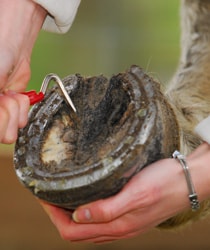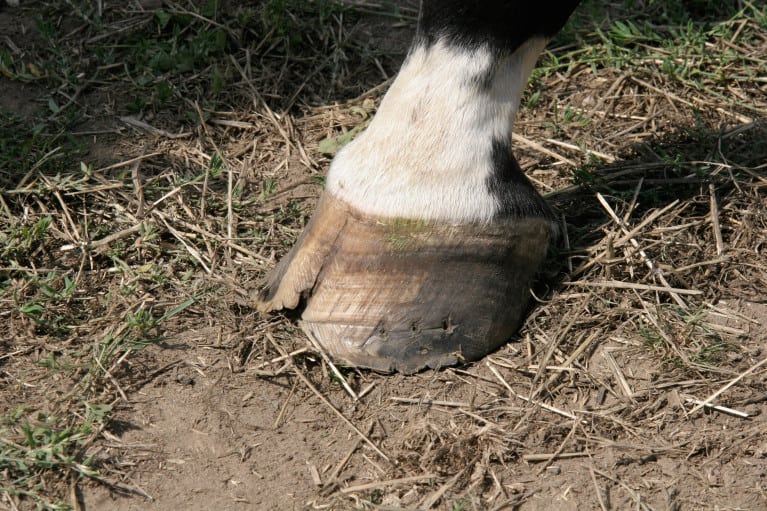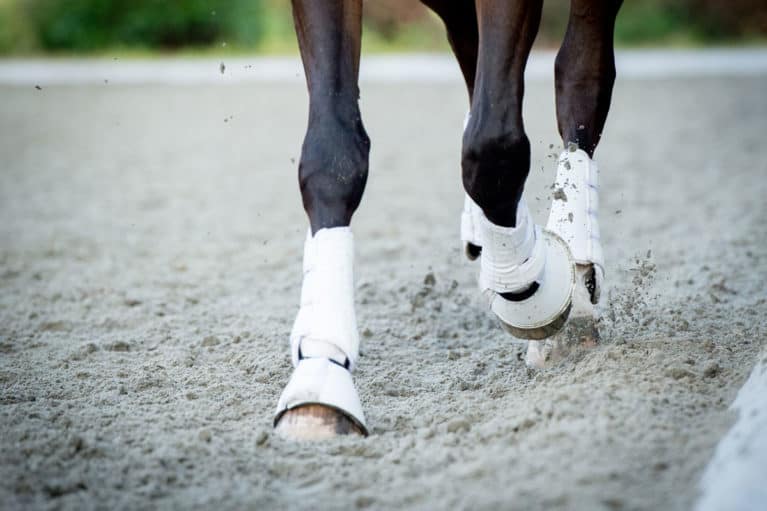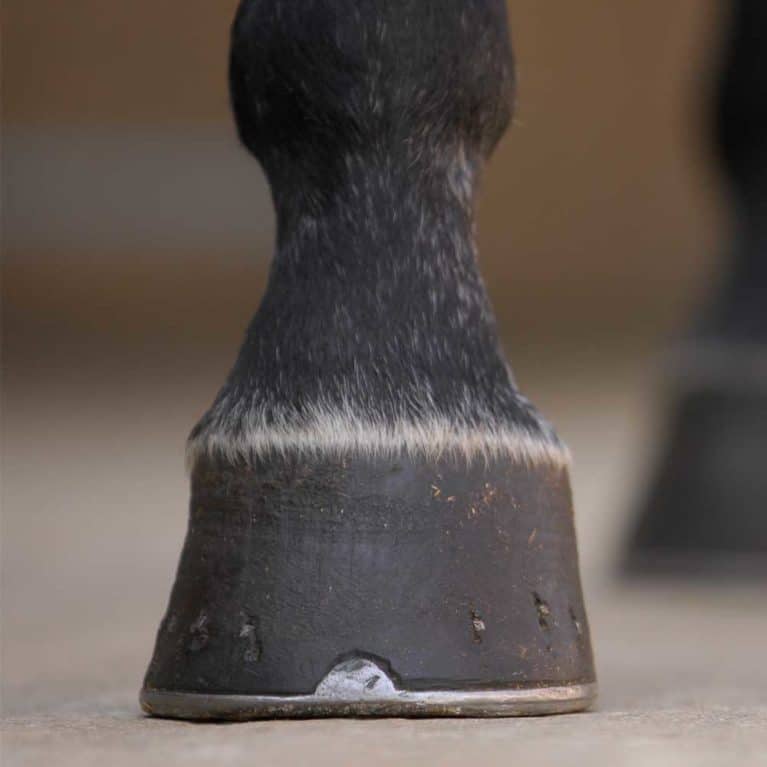

Caring for your horse’s hooves can be quite a challenge. From the variation in ground condition to the ever-changing weather, there are multiple variables that can affect the condition of your horse’s hooves. That’s why it’s that much more important to make sure that you have the right hoof care products to give your horse the best possible chance of having healthy feet. Though old, the saying ‘No hoof, no horse’ is the gospel truth. Without healthy hooves, your horse will not be able to withstand the demands of life as a riding horse and may even struggle at rest.
Ensure you pick out your horse’s feet everyday with a hoof pick and keep an eye out for shoe wear and tear, as well as signs such as risen clenches and pinching across the bulbs of the heel on shod horses. While on unshod horses you should check for splits, cracks, flares and overgrown misshapen hooves.
If an issue such as any of these should arise, then you’re your first port of call would be to get in contact with your farrier as soon as possible. But in terms of general care for your horse’s hooves there are many products out there for the different hoof problems that may occur.

Some problems will be more prominent in different seasons, the most common ones include:
Cracking, dry and brittle hooves – usually worse in the summer when conditions are dry and the ground is hard, for these there are plenty of balms and greases available on the market that consist of light oils (e.g. Avocado oil) to help moisturise and strengthen your horse’s hooves.
Thrush – if this infection occurs then anti-fungal and anti-bacterial sprays, tar liquids, oils and balms are the best way to go. Penetrating deep into the foot, these products are able to provide a long-lasting barrier against moisture. Thrush often occurs when horses hooves are exposed to wet but warm conditions.
Slow growth – a common problem that can happen all year round, slow growth can be combatted through the use of ointments and adding nutrients to your horse’s feed (e.g. supplements including zinc, calcium, protein and biotin).
Excessive water & urine absorption – horses living in wet environments are the most susceptible to this, but this problem can also occur in horses who are kept on damp bedding or who stand in mud for long periods of time. The best way to treat this problem would be to ensure that bedding in the stable is clean and dry, or if your horse lives outdoors, then to try and provide a dry place in the field (e.g. a well-drained gravel pad or a covered shed). There are also lots of barrier topical solutions available on the market, which can help protect hooves from excessive moisture absorption.
General everyday maintenance – your best course of action is to try and balance the amount of moisture your horse’s hooves are getting. It is a juggling act, but to gain the optimal hoof condition it is import that you keep up to your horse’s hoof care. Every horse is different, meaning that it is up to you to decide when and which products will help your horse stay healthy at different seasonal points throughout the year.

But of course, apart from the various hoof care products available, the key to avoiding your horse having uncomfortable feet is to ensure that your farrier attends to shod feet every four to six weeks, and attends to unshod feet every six to ten weeks. This way you can find out from an expert how well your are caring for your horse’s feet, as well as glean any extra insightful information that may make caring for your best friend’s hooves that much easier.











